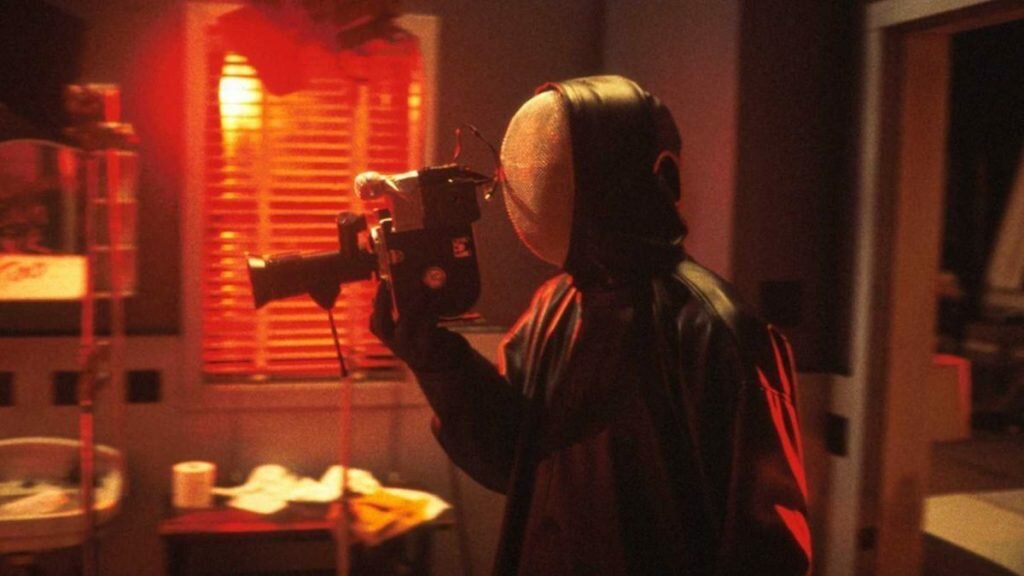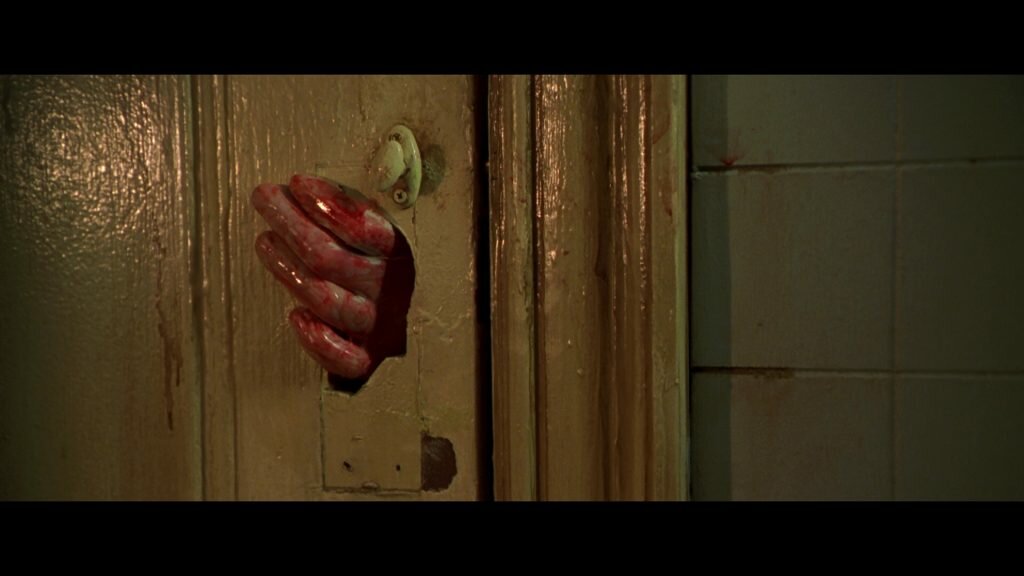Blurring Fantasy And Reality in Urban Legends: Final Cut
Over the past year, I’ve spent a lot of hours sitting down watching films. Films that I needed to watch for comfort, some for the thrills, some to cry to, and some to finally cross off my bucket list. When I got around to watching Urban Legends: Final Cut, I thought it would be a rewatch just to pass the time. Instead, it was a discovery, a near revelation of finding a new favourite film. I’ve realized how much I absorb and can live inside, not only horror films but also slashers – a sub-genre that had held onto my heart since before I realized I actually love the horror genre as a whole. I went from rarely thinking about the film to having seen it four times in the past month. It is the style and the elegance of what it is trying to speak about, the trappings of the tropes and rules of genre filmmaking. Additionally, what it says about us, the audience and how we perceive murder on screen due to the lens that separates us and the acts of violence.

Horror films were always a blind spot for me, especially films from the early-aughts. I was young and afraid of them and avoided them every chance I had. At some point in high school, that changed. I was fascinated by the brutality and the gore found in the Saw franchise and Battle Royale. With an insatiable taste for blood and guts, I watched as many of the “important” films as I could get my hands on. The exception being the Scream franchise which I had already seen in full (circa 2008, the fourth was merely a pipe dream at this time). While horrific in retrospect, the humanity in Ghostface made it easier to stomach. Unknowingly, the humour found in every installment made the films feel like they wouldn’t keep me up at night, even with every repeat viewing (of which I do at least annually), I’m in shock at the violent deaths the victims face that rarely holds any weight to the audience. Still, those are the rules found in a slasher.
Whether it’s the original entry, the follow-up sequel, or the end of a trilogy, for the sake of chronological sake regarding Final Cut, we won’t refer to the reboot/remake/continuation based rules that might apply in both Scream 4 and the upcoming Scream. As the Scream franchise famously points out, some expectations and rules go with a slasher. The audience goes to the sacred big screen and expects a high body count, sex, nudity, booze, drugs and an iconic killer. While these rules were fairly aware to the audience that loves these films, it was rare to see characters be mindful of their situations and know the same rules that we love. It’s worth bringing up the Scream films because any slasher film post ‘97 has some form of Scream DNA in its bones.
On my first viewing of Urban Legends: Final Cut, I couldn’t help but think about Scream 3. Acknowledging some of the filmmaking aspects, being on a film set, there were similarities to be found. The original trilogy constantly questions what horror films can do to our psyche. Still, Final Cut drives the blade in further and shows us proof of how desensitized we are to watching violence in cinema.

Outside of Scream, many moments are taken right out of films by Hitchcock. This isn’t entirely surprising, considering there’s a Hitchcock award being given to the best thesis film at the end of the semester. It comes as no surprise to those who have watched a lot of his films that there’s a common throughline of Voyeurism. We become fascinated as we watch characters peek through blinds and use telescopes to look into a different apartment. It’s a fascination that lends itself to anyone who watches films because we too are looking for tiny glimpses of the characters’ lives on screen. By the time the film is over, we have an understanding, a love for these characters. We feel as if we are sometimes seen because of them and that we see them. But yet, when we watch a film with a high body count, we quickly can move on from their death. Instead of mourning them, we often sound like Stan Washington (Anthony Anderson), “not enough blood for me.”
Amy Mayfield is a film student at a prestigious film school, and she struggles to come up with her thesis film. Until she meets Reese Wilson (Loretta Devine, who was in the first Urban Legend). Reese tells Amy about the first film’s events, a serial killer who would use urban legends as the base to kill students. Like any good storyteller and filmmaker, Amy realizes there’s something genius found inside these real-life events and then proposes it to her professor Solomon (Hart Bochner). Solomon proposes to use a few themes that might work with her premise, but it’s the last one he mentions that is the crucial one for the film we’re watching: “how the lines blur between fantasy and reality.” When we eventually watch Amy’s cast and crew be murdered, Amy’s living team is unaware of which scenes they watch are made by the crew and which results in actual death.
When the film opens, we watch a sequence of a film being made. The director and another cast member mention how Sandra isn’t a talented actress. So when Sandra is killed on-screen and screams, the crew cheers for the murderer. As the scene breaks the fourth wall and Sandra runs through the film set, we hear “get her.” They nod in excitement and agreement with the scene. We, the audience, know she’s been killed, but nobody else knows. Amy is the only person who watches the scene terrified. We see her eyes react, both stating, “I didn’t shoot this,” and “this feels real.” Amy is unable to look at the screen, but everyone is amazed.
When promoting Hereditary, Ari Aster has talked about his use of genre for storytelling. He mentioned he wanted to write a story about a family dealing with loss, but instead of ending the film with the family growing stronger, they would fall apart. He originally envisioned the film as a drama, which, at its core, it is, but to put an audience through this much pain to end in an even worse place, the film would have been hated. So instead, he made the film a horror film, and the reception changed. One genre’s pro is another’s con. Depending on the genre, a storyline can have wildly different reactions from the audience based on the expectations of the genre we’re watching.

“Get them” is a common staple phrase that is yelled out loud during screenings of slasher films. With Urban Legends: Final Cut, we see it repeatedly as we watch people die, but we cheer for it the same way that Vanessa (Eva Mendes) does. Except for a few final girls, we often side with the masked murderer. We are more inclined to cheer for death than mourn for it. At least in films like Final Cut, where we seek out the high body count. We peek into a fictional character’s life, have a brief understanding of who they are, what they might become, and then we watch them take their last breath in excitement.
Watching Final Cut has changed death in horror films for me. By placing a camera between the murderer and the victim, we are desensitized to the act of murder. We silence our fellow audience to revel in the death of a friend. When Solomon tells the students about Travis Stark’s death, he brings up François Truffaut’s Day for Night. “Truffaut asked the question, is film more important than life?” Even though Solomon’s answer is a resounding yes, I believe Urban Legends wants us to question what’s the difference. For us to not get lost in the blurring of reality and fantasy, to be able to tell the difference between watching our friend die or performing a death scene.
If you’d like to read more of Andres’ work, you can find it here!